The Savvy Shopper’s Guide: How to Spot High-Quality Clothes (and Avoid a Rip-Off)
I’ve spent the better part of my life with fabric, thread, and patterns. Seriously, for over thirty years. My hands can tell the difference between a cheap, scratchy polyester and a high-quality technical textile just by touch. It’s a sense you develop after starting as an apprentice in a small bespoke shop and eventually managing production for independent designers turning wild ideas into wearable art. I’ve seen countless trends come and go, but the core principles of a well-made garment? They never, ever change. It all comes down to the fabric, the cut, and the care put into every single seam.
In this article
Lately, I’ve seen a huge wave of interest in designers who operate outside the mainstream. People are tired of cookie-cutter fashion and are hunting for clothes with a real point of view. They want pieces that tell a story. You see these brands pop up with interesting shapes like dramatic kimono sleeves or beautifully draped necklines, often using bold materials like modern eco-leather. But let’s be honest, when you step away from the familiar stuff at the mall, how do you know if you’re buying a quality piece or just an overpriced gimmick? That’s exactly what this guide is for. We’re going to look at these unconventional clothes through the eyes of a pro and break down what truly makes a garment worth your hard-earned money.

1. It All Starts with Fabric and Form
Before a single stitch is even sewn, a garment is just two things: a bolt of fabric and a paper pattern. The relationship between these two is absolutely everything. A designer who truly gets this can create clothing that moves with you and lasts for years. A designer who doesn’t… well, they create pieces that look fantastic on a mannequin but feel awkward and wrong on an actual human body.
Getting a Feel for Your Materials
When I pick up a garment, the very first thing I do is feel the fabric. Let’s talk about some of the materials you might see from these more creative brands, like “eco-leather.”
Natural Fibers vs. Next-Gen Synthetics: We all know and love natural fibers like cotton, linen, and wool. They breathe and feel familiar. But in modern design, high-quality synthetics are game-changers. The term “eco-leather,” for instance, can be a bit of a mystery. It usually refers to a polyurethane (PU) fabric, which is a good thing! It’s way better than its cheaper cousin, PVC. PU is softer, more flexible, and doesn’t have the same environmental baggage. When I’m looking at a PU leather piece, I flip it over and check the backing. Is it bonded to a stable, soft knit fabric, or some cheap, papery non-woven material? A quality PU will have a backing with a little bit of stretch, allowing it to move with you without tearing.
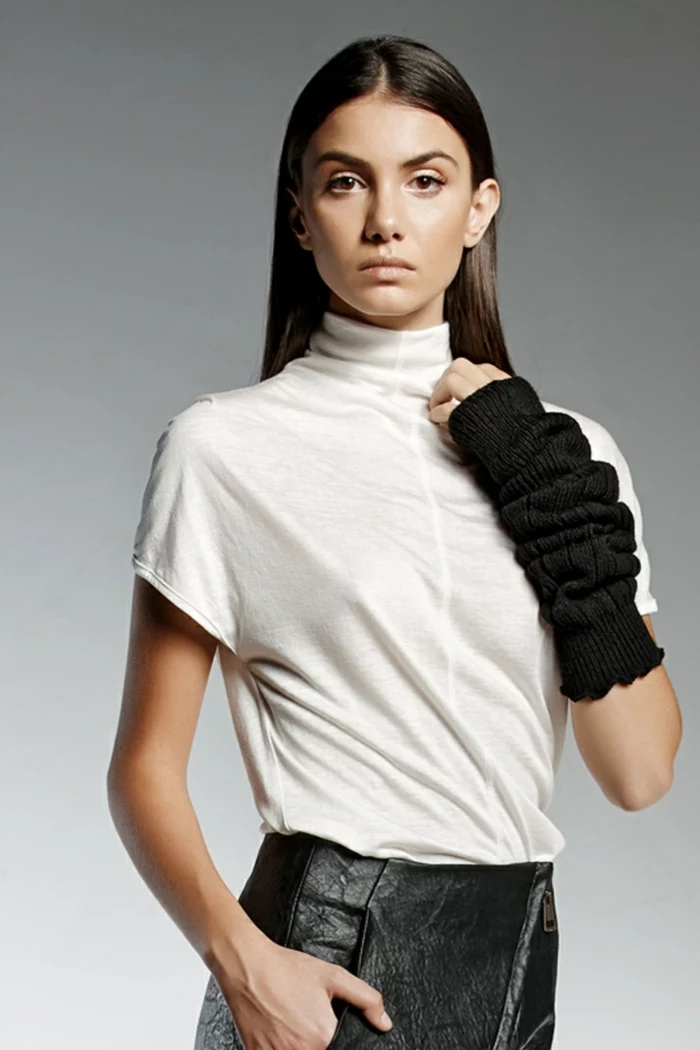
A quick heads-up on eco-leather care: Unlike real leather, which can sometimes be repaired, a deep scratch or scuff in PU fabric is pretty much a death sentence. There’s no polishing it out, so it’s something to keep in mind!
The Deal with Drape and Weight: A blouse with those big, flowing kimono sleeves needs a fabric with fantastic drape. Drape is simply how a fabric hangs under its own weight. A stiff fabric would make the sleeves look like you’re about to take flight, while a flimsy one would just collapse. The pros might choose a silk crepe de chine, a high-quality viscose, or a lightweight Tencel because they have the right fluidity. Fabric weight is also key. A light blouse fabric might be around 90-120 grams per square meter (GSM), while a heavy coat could be 300 GSM or more. A skilled designer knows that a draped neckline, which is often cut on the bias, needs a fabric with enough heft to hang in those gorgeous folds without twisting out of shape.
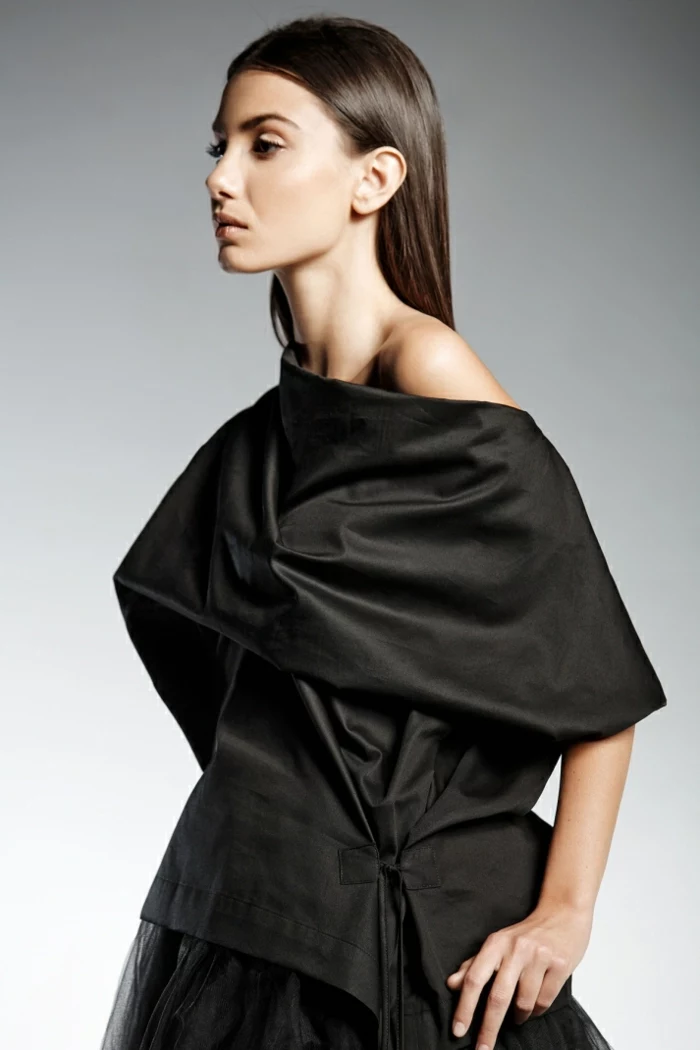
The Hidden Genius of a Pattern
The pattern is the garment’s blueprint. For standard clothes, patterns follow established rules. For unconventional clothing, a designer has to know those rules inside and out to break them effectively.
The Magic of a Bias Cut: That beautifully draped neckline is a classic example of cutting on the bias. Woven fabric has threads running lengthwise (warp) and crosswise (weft). When you cut the fabric at a 45-degree angle to those threads, you’re on the bias. This unlocks a natural stretch and fluidity you don’t get otherwise. But here’s the catch: cutting on the bias is expensive. It wastes a ton of fabric compared to a standard straight cut. So, when you see a well-executed bias-cut piece, it’s a huge mark of quality. It tells you the designer put the garment’s beautiful form ahead of saving a few bucks on material.
The Kimono Sleeve Test: A traditional sleeve is set into a circular armhole for a close fit. A kimono sleeve, on the other hand, is cut as one piece with the body of the garment—no shoulder seam. This creates that lovely, relaxed silhouette. The challenge is giving you room to move your arm without creating a giant, baggy mess under the arm. A well-drafted version might have a gusset (a small, diamond-shaped piece of fabric) inserted at the underarm for better mobility.
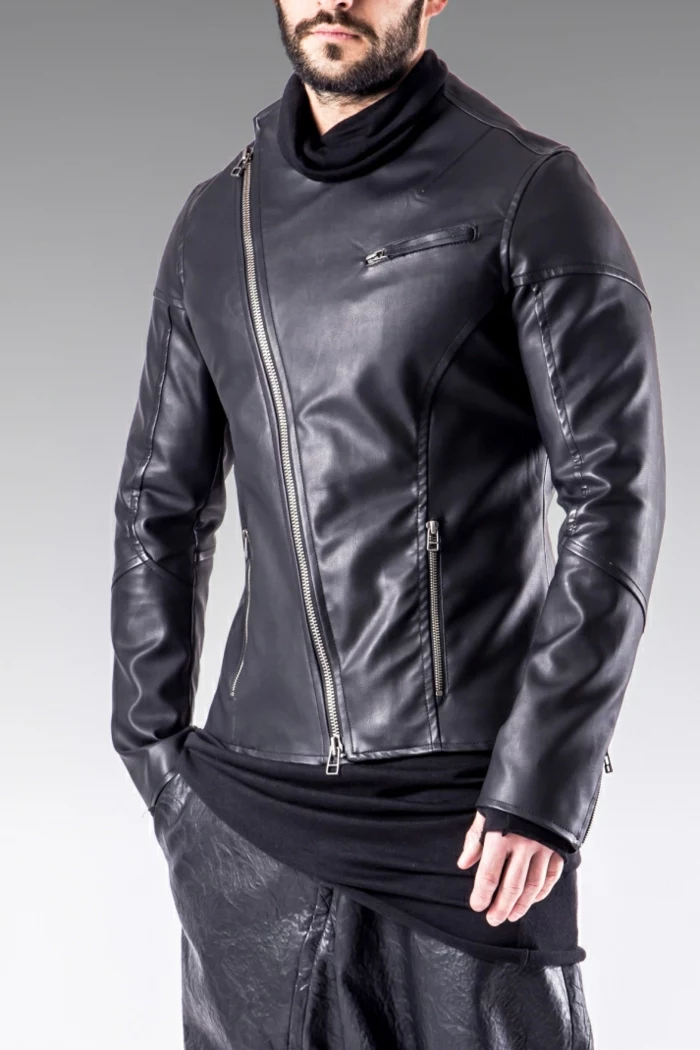
Here’s a fun little test you can do right now. Go into your closet and find a shirt with loose, dolman-style sleeves. Put it on and lift your arms straight up. Did the entire side of the shirt lift up to your waist? If so, the pattern isn’t as well-engineered as it could be.
2. The Telltale Signs of Quality Construction
Once the fabric and pattern are sorted, it’s all about how the garment is put together. These are the little details that separate a professional piece from a throwaway item. I always told my apprentices that anyone can learn to sew a straight line, but true craftsmanship is found in the details.
Look Inside: Seams and Finishes
Always, always, always turn a garment inside out. The inside will tell you more about its quality than the outside ever will.
- Serged vs. French Seams: The most common finish you’ll see is a serged edge, which uses multiple threads to keep the raw edge from fraying. It’s fast and it works. But for higher-end pieces, look for more elegant techniques. A French seam, for example, is a seam within a seam. From the inside, it looks like a tiny, neat little tube of fabric, completely hiding any raw edges. It’s a beautiful finish you see on delicate fabrics, and it takes twice as long to sew.
- Other Pro Finishes: Another great one is the flat-felled seam, which you’ll recognize from the sides of your jeans—it’s super durable. On an unlined jacket, you might find bound seams, where the raw edges are wrapped in a strip of fabric. This is a true sign of high-end construction.
- Stitch Quality: Look closely at the stitching. Is it straight? Is the tension right? If the thread is too tight, the seam will pucker. Too loose, and it’ll be weak. A consistent stitch density (stitches per inch, or SPI) is another mark of quality. For a light woven fabric, you’d want to see around 12-15 SPI.
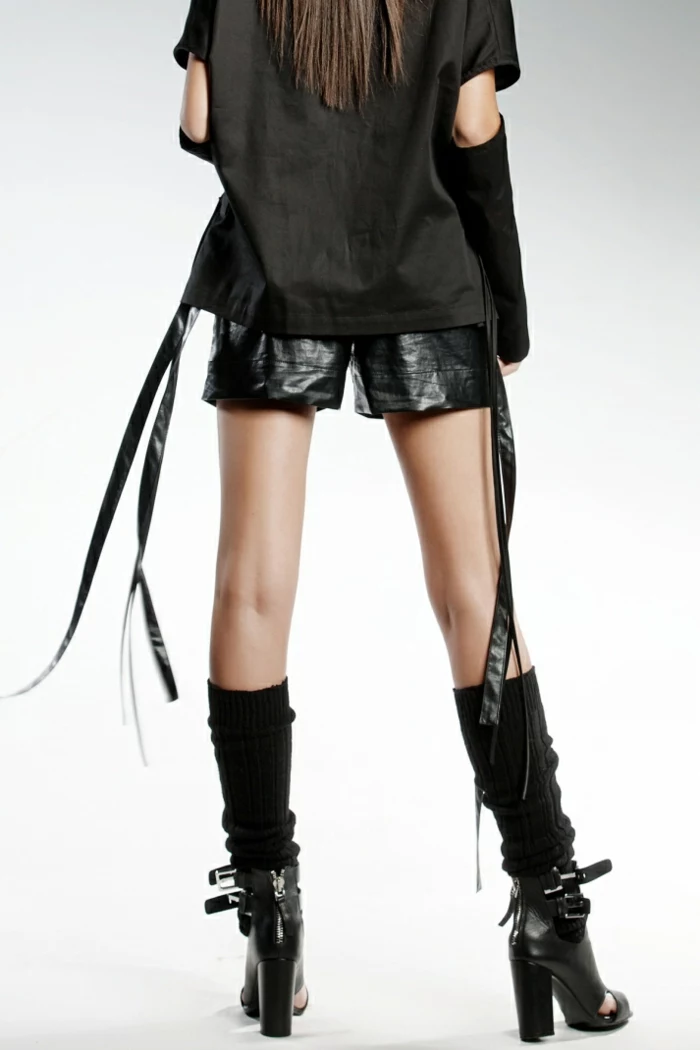
Don’t Overlook These Details
Zippers and Hardware: An invisible zipper should be just that—invisible. When it’s zipped up, it should look like a simple seam. Check the bottom; it should be secured with a strong little stitch called a bartack. High-quality garments often use zippers from trusted brands like YKK or Riri because they operate smoothly and don’t break. The same goes for buttons and snaps; they should feel substantial and be sewn on tightly.
Pattern Matching: This is my favorite giveaway for a cheaply made garment. If the fabric has a pattern—stripes, plaid, a floral print—see how it lines up at the seams. On a quality piece, the pattern will match perfectly across the front closure and side seams. I’ll never forget a beautiful plaid coat I saw once from across a room. It looked like a $500 piece. But when I got closer, the plaid was off by a full inch across the front. It instantly went from looking expensive to looking cheap. This detail requires careful planning and uses more fabric, so mass-producers almost always skip it.
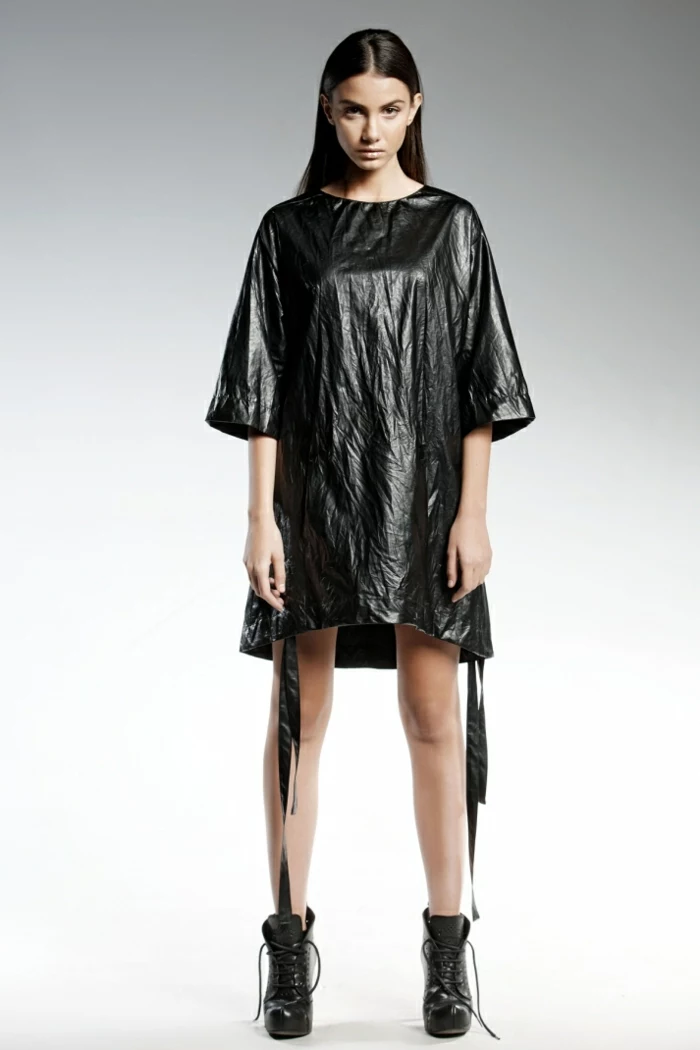
3. How to Actually Afford and Care for Unique Pieces
Owning a piece of unconventional clothing is one thing; living with it is another. These garments are an investment, and they need the right care and styling to really pay off.
Caring for Your Investment
First rule: read the specific care instructions on the tag. If you’re ever in doubt, play it safe.
For that eco-leather jacket, never, ever put it in a hot dryer. The heat can literally melt the polyurethane coating, causing it to bubble and peel. I had a client who ruined a custom jacket this way, and it was heartbreaking. To clean it, just wipe it down with a damp cloth. To store it, use a padded hanger to protect the shoulders and avoid folding it for long periods, which can create permanent creases.
For garments made with multiple fabrics, the safest bet is to follow the care instructions for the most delicate material on the piece. When in doubt, cold water on a gentle cycle and hanging to dry is a good starting point. Or, even better, find a reputable dry cleaner. A good tip is to ask a local high-end boutique who they use for their own stock; they’ll know who to trust.
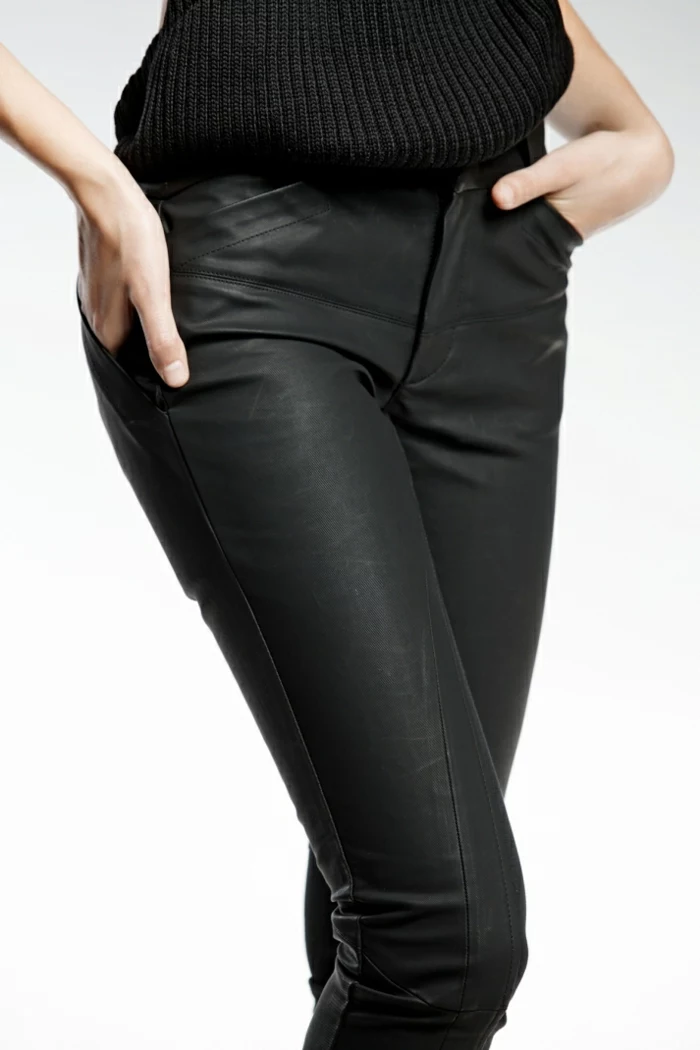
The Real Math: Cost-Per-Wear
A statement piece can feel intimidating, but the secret is to let it be the star. Pair that wild jacket with simple, high-quality basics like a plain tee and dark jeans. Let the jacket do the talking.
And this is where the concept of “cost-per-wear” becomes so important. Think about it: that trendy $80 fast-fashion jacket you wear four times before it falls apart or goes out of style costs you $20 per wear. But a beautifully made $400 jacket from an independent designer that you absolutely love and wear a hundred times over the next five years? That’s just $4 per wear. The math doesn’t lie. Investing in well-made, unique pieces is almost always the smarter financial move in the long run.
By the way, what’s a fair price? For a well-made jacket from an independent European designer using these quality techniques, you should expect to pay somewhere in the range of $350 to $700. If you see something for much, much less, you should start asking which corners were cut to get the price that low.
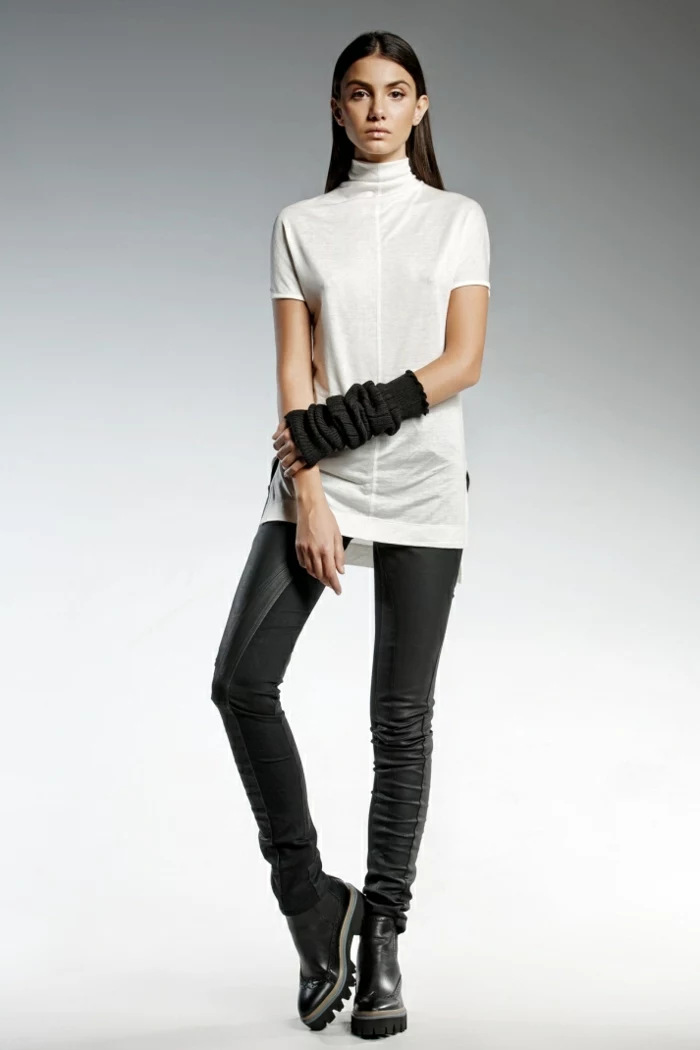
4. Your In-Store Quality Checklist
Okay, let’s put this all together. Once you know the basics, you can start to spot quality in minutes. Here’s a quick mental checklist you can run through in the store or as soon as your online order arrives.
The 5-Point Dressing Room Inspection
1. Feel the Fabric: Does it have substance and a nice hand-feel, or does it feel thin, brittle, or plasticky? 2. Check the Insides: Flip it inside out. Are the seams finished neatly? Look for French seams or bound edges on nicer pieces. 3. Inspect the Hardware: Work the zipper. Does it glide smoothly? Do the buttons and snaps feel solid and secure? 4. Look at the Lining (if it has one): A quality jacket lining should feel smooth and silky, not cheap and static-prone. Look for an “ease pleat” down the center of the back—it’s a little fold that gives you room to move without tearing the lining. 5. Do the Grainline Test: This is a big one for pants. Hold them up by the waistband. The legs should hang perfectly straight. If they twist to one side, they were cut off-grain to save fabric, and they will never feel or look right.
When to Call in a Pro (and How to Find One)
Unconventional garments can be tricky to alter. Hemming a pair of pants is one thing, but changing the shoulders on a complex jacket is a job for an expert. Before you buy an expensive piece, be realistic about the fit. If it needs major surgery, it might not be worth the risk.
To find a tailor who can handle this kind of work, don’t just go to the corner dry cleaner. Search online for terms like “bespoke alterations,” “custom tailoring,” or “couture alterations” in your city. Another great trick is to call a few high-end local boutiques and ask who they recommend for alterations. A good tailor is your best friend in building a long-lasting wardrobe.
5. The Honest Truth About Shopping Smart
My reputation is built on trust, and that means being honest about potential pitfalls.
A Few Red Flags to Watch For:
- Twisting pant legs that don’t hang straight.
- Patterns (plaids, stripes) that are wildly mismatched at the seams.
- Bubbly, wavy, or sticky invisible zippers.
- Thin, cheap-feeling fabric that you can tell won’t last.
- Loose threads and puckered seams everywhere you look.
The Reality of Buying Online
Let’s be real, most of us are shopping online these days. But nothing replaces touching and feeling a garment. Before you click “buy” on an expensive item from an indie brand, do your homework. Read reviews, check for a fair return policy, and please, take your own measurements!
Don’t just guess your size. Grab a soft tape measure. For your bust, measure around the fullest part. For your waist, find the narrowest point, usually near your belly button. For your hips, measure around the widest part. And don’t pull the tape super tight—you should be able to slip a finger underneath. Compare these numbers to the brand’s size chart. A designer’s
Inspirational Gallery
When inspecting a garment, don’t just look—listen. High-quality hardware has a distinct sound. A well-made zipper from a brand like Riri or Lampo will have a smooth, satisfying metallic glide, not a scratchy, thin rasp. Similarly, a solid metal button or clasp will feel weighty in your hand and make a soft ‘clink’ rather than a hollow ‘tick’. These small auditory cues are signs of components built to last.
The average consumer now buys 60% more clothing items a year than they did 15 years ago, but each garment is kept for half as long.
This stark reality from a McKinsey report highlights a shift towards disposability. Investing in quality construction—strong seams, durable fabric, and timeless design—is a direct counter-action. A well-made piece is not just for a season; it’s designed to be a long-term part of your wardrobe, reducing waste and ultimately offering better value.
How can I tell if a pattern is well-matched?
Look at the seams on a striped or plaid garment. On a high-quality piece, the patterns will align almost perfectly across seam lines, especially at the shoulders, side seams, and pockets. This requires more fabric and meticulous labor, as the pattern pieces must be cut precisely. If the stripes or checks are misaligned and jarring, it’s a clear indicator that the manufacturer cut corners to save costs.
- The garment hangs beautifully without twisting or pulling.
- The drape feels fluid and natural, enhancing your shape.
- After washing, it retains its original form without warping.
The secret is how the fabric was cut. These are the hallmarks of a garment cut ‘on grain,’ meaning the pattern pieces were perfectly aligned with the fabric’s lengthwise and crosswise threads. It’s a fundamental step that lazy or cheap manufacturing often skips to save material.
The Buttonhole Test: A surprisingly telling detail is the buttonhole. On a superior garment, you’ll find dense, tight stitching around the opening with no frayed threads. Some high-end shirts or jackets will even feature a final, horizontal buttonhole at the bottom for better durability. A sparse, messy, or fraying buttonhole is a red flag for rushed production.
Beyond the fabric itself, consider the lining. A fully lined jacket or skirt isn’t just a luxury; it helps the garment hang properly, reduces strain on the outer fabric, and makes it easier to slip on and off. Check if the lining is a quality material like Bemberg silk or cupro, known for its silky feel and breathability, rather than a cheap, static-prone polyester.
Cashmere: Often associated with luxury, but not all cashmere is created equal. High-grade cashmere uses long, fine fibers, resulting in a pill-resistant, incredibly soft knit. Brands like Loro Piana or Brunello Cucinelli are masters of this. Cheaper versions use shorter fibers that break and pill easily after just a few wears.
Merino Wool: A performance powerhouse. Unlike scratchy wools of the past, fine merino is soft enough for base layers. It’s naturally temperature-regulating and odor-resistant. Look for it in activewear from brands like Icebreaker or in refined sweaters from labels like John Smedley.
Both are natural fiber investments that, with proper care, will outperform synthetics for years.
A single millimeter can make the difference. High-end manufacturers often use a higher number of stitches per inch (SPI).
Flip over a seam. Are the stitches small, tight, and uniform? A high SPI (around 10-12 for a quality shirt) creates a stronger, more durable seam that’s less likely to pucker or pop. A low SPI (6-8) is faster to produce and uses less thread, but it’s a weak point that signals lower overall quality.
The ultimate savvy shopper move for accessing incredible quality is exploring the world of high-end resale. Platforms like The RealReal or Vestiaire Collective authenticate luxury and designer pieces, allowing you to buy garments with superior construction—from a perfectly tailored Acne Studios blazer to a handmade Issey Miyake Pleats Please piece—at a fraction of the original cost. It’s the best way to experience true craftsmanship without the boutique price tag.
To maintain the unique structure of your unconventional garments, especially those with dramatic drapes or avant-garde cuts, ditch the wire hangers.
- Use wide, padded, or wooden hangers that support the shoulder structure and prevent stretching.
- For heavy knitwear or bias-cut pieces, fold them carefully and store them flat in a drawer to prevent gravity from distorting their shape over time.










